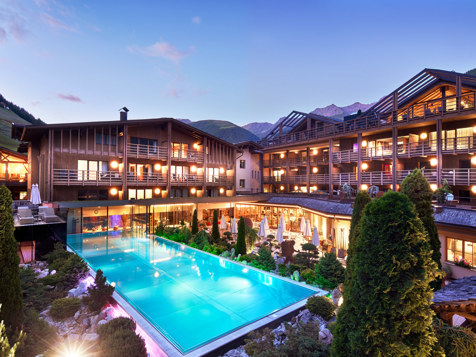Avalanche report for ski touring
Alpine ski touring is one of the most popular outdoor sports for those who like the silence of untouched nature in winter. But during ski tours you have to assume the risk of avalanches.
One of the most important parts for the preparation of a ski tour is the avalanche report. Read here how to interpret the warning levels of the avalanche warning service in Bozen.
Avalanche warning levels
- 1 - low risk: The blanket of snow is firm and stable. Avalanches break only by high pressure. You can go alpine ski touring without many risks.
- 2 - moderate risk: Most of all accidents happened when there is moderate risk. High pressure can break avalanches.
- 3 - serious risk: The blanket of snow is not very much firm and stable. Already low pressure can cause avalanches. Under these conditions alpine ski touring involves many risks.
- 4 - big risk: The blanket of snow is not firm. Also, spontaneous avalanches are possible. Don’t go alpine ski touring!
- 5 - huge risk: The blanket of snow is not firm and very unstable, also in flat slopes. Don’t go alpine ski touring!
Security tips & information about avalanches
- Avalanche forecast: The weather is a key factor for forecasting avalanche activity. Before starting out for a tour you should always take a look at current avalanche report.
- Fresh snow: Fresh fallen snow is dangerous and easy to recognise and avoid.
- Wind: Wind can rapidly deposit snow in slabs with can avalanche easily.
- Sun and heat: When new snow falls on a sun crust, it’s important to check out whether the sun crust is wet or frozen when the snow starts. If it's wet, the new snow will stick to it and you most likely won't have any immediate avalanche problem, but if the crust is frozen, then the new snow does not tend to bond very well. Sun crusts we find them on southeast, south, southwest and west facing slopes.
- Avalanche detector, blade and avalanche sensor;
- Control if the detectors are on;
- Ski with ski stopper and not with a fix back strap;
- Always enter alone in avalanche danger zones;
- Do several slope cuts;
- Keep an eye on your partners.
Ski touring
Selected accommodations in South Tyrol
TOP HOTEL


- Exclusive wellness & pool area
- Panorama Sky Lounge
- Luxurious rooms & suites
- Directly at the Klausberg ski lifts
- Gourmet cuisine
from
203 €
per day
Memorise
Memorised
Maximum number (12) reachedRemove another accommodation to select this one
TOP HOTEL

- Timeless Sky SPA & wellness garden of 5,000 m² with outdoor SPA
- 8 indoor & outdoor pools & 12 saunas
- Holidaycheck Award Gold 2025
- Gourmet cuisine
- Guided outdoor nature experiences daily, 6 days a week
from
220 €
per day
Memorise
Memorised
Maximum number (12) reachedRemove another accommodation to select this one
TOP HOTEL

- First healthiness hotel in South Tyrol
- Several saunas & pools
- Culinary highlights
- Guided hikes & bike tours
- Fitness & relaxation programme
from
165 €
per day
Memorise
Memorised
Maximum number (12) reachedRemove another accommodation to select this one
TOP HOTEL

Hotel Alpen Tesitin Panorama Wellness Resort
Welsberg-Taisten at Mt. Kronplatz
4.9
Excellent
28 Recommendations
South Tyrolean friendliness, modern feel-good ambience, magnificent view of the Dolomites, outdoor sun infinity pool with wow effect and 180° dream panorama.
from
210 €
per day
Memorise
Memorised
Maximum number (12) reachedRemove another accommodation to select this one